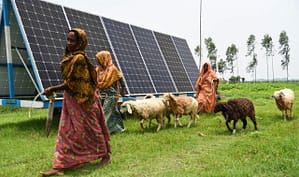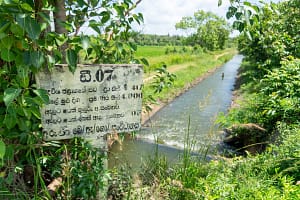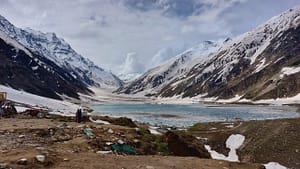Research Approach
The project is working at the national scale with field activities focusing on three provinces: Vientiane, Bolikhamxay, and Champasak.
Research activities may be organized by the following six components, which include technical, socio-economic, institutional, and capacity-building aspects.
1. Development hotspots and resource potential
This component seeks to establish a rational basis for selecting prospective areas and aquifers for groundwater development that also takes into account important non-hydrogeological variables such as soils, land capability, irrigation potential, proximity to markets, etc. At a larger scale, remote sensing and Geographic Information Systems (GIS) techniques, backed up by groundtruthing and field study data, are being used to map groundwater development hotspots. At the local scale, existing data are being collated and new data are being collected and organized into an information management system.
2. Pilot trial evaluations
Groundwater irrigation trials are being established and monitored to establish technical performance and socio-economic viability. The trial sites are situated across the Laos lowlands and include privately managed and community managed systems. Community and participatory approaches are being used to facilitate inclusion and better management of groundwater.
3. Opportunities and constraints for agricultural groundwater use
This component aims to better understand agricultural groundwater use from a socio-economic perspective. It seeks to analyze more fully the factors that have constrained the use of groundwater irrigation to date. The major activities include an agrarian system analysis at the household and village level, a perception study on how different actors view groundwater potential and use in relation to agricultural and domestic access, and focus group discussions.
4. Groundwater governance and policies
This component comprises a comprehensive assessment of the existing institutions and policies (both within and outside the water sector), and their relevance under a scenario of increased groundwater demand in the agricultural and other sub-sectors. It involves desktop reviews, interviews, field visits, local consultations and workshops. Cross-comparisons and lessons learned will be drawn from other regions (e.g. South Asia) where groundwater use is currently more intensive.
5. Sustainability assessments and modeling
Assessing the sustainability of groundwater resources in relation to the water required for more productive cropping systems takes into account the natural rates of recharge, cropping choices, the area of land that can be sustainably irrigated, other water users, water quality issues, and the environment/ecosystem services. Simple analytical approaches for estimating the replenishable resource are being tested alongside more complex numerical approaches.
6. Capacity building and training
Capacity within the groundwater sub-sector is extremely low. The project provides focused training for team members and other key stakeholders that cover both theory and practice on a range of topics from the fundamentals of modeling to management. Exposure visits to view projects in neighboring countries and interact with relevant institutions are being arranged. The project also supports Lao nationals with on-the-job training and postgraduate opportunities. It also attracts the involvement of a good number of international students.
Outcome Development
In scientific terms, the project is working towards:
- Improved understanding of hydrogeological systems & analysis.
- Clarity on the way groundwater is perceived and used under different contexts.
- Clearer definition of the actual costs and benefits of groundwater irrigation.
- Tools that assess how to sustainably use groundwater and avoid negative environmental impacts.
- Strengthened technical and institutional capacity within government, universities and other important stakeholders
In terms of policy, the main areas of impact are likely to arise from:
- Greater recognition and strengthened governance of groundwater resources.
- Poverty alleviation, food security, livelihood enhancement for rural communities and greater resilience to climate variability and climate change.
</hr\>










